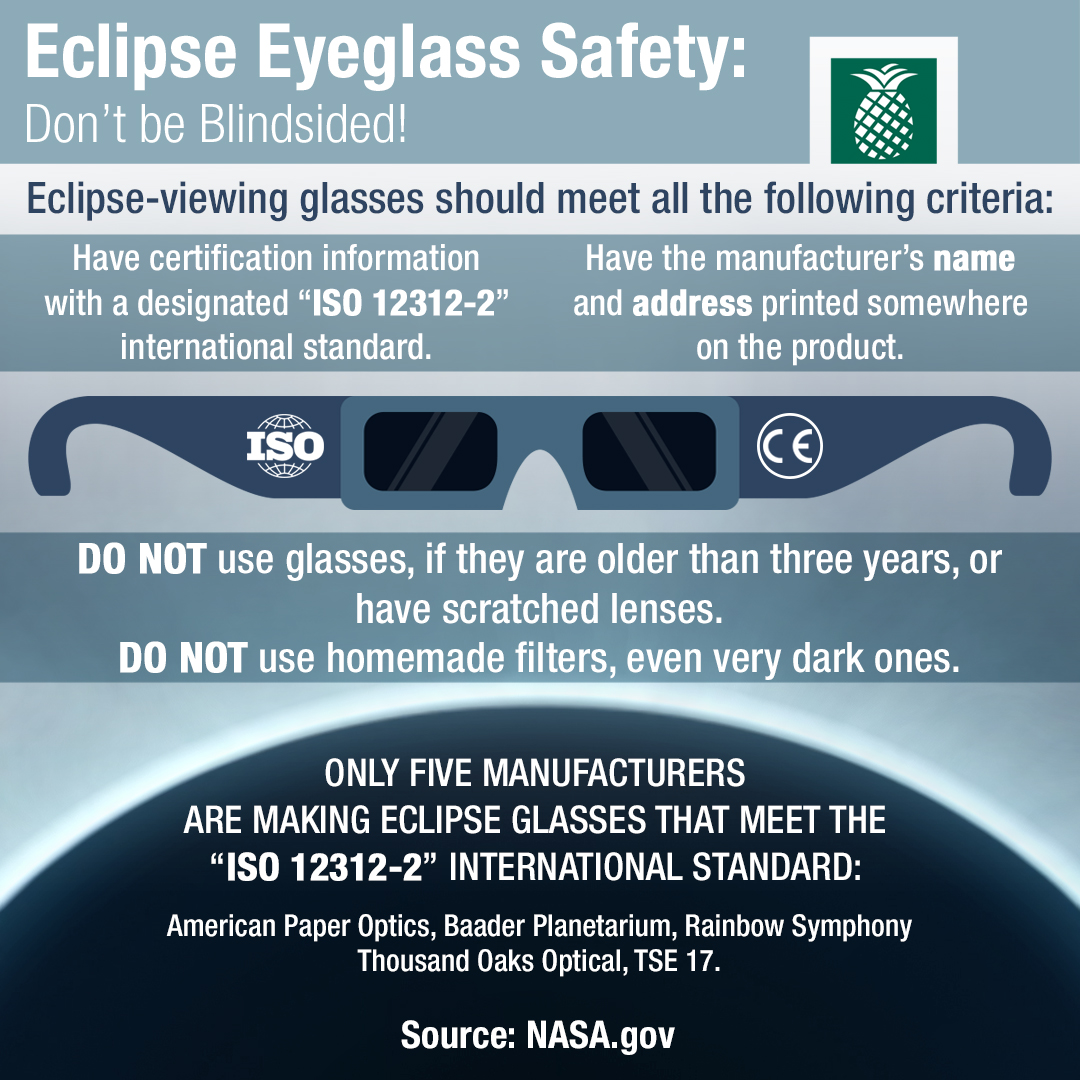April 7, 2020 by John Fernandez
Solar Eclipse: Protecting Your Eyes From the Sun (Always)

Never look at the sun directly, your mom may have told you more than once. And she was right. This is also true during the long-anticipated total or partial solar eclipse that will take place Monday, Aug. 21, after 1 p.m.
Anyone within the “path of totality” will see a total solar eclipse. This path, where the moon will completely block the sun, will stretch from Salem, Oregon to Charleston, South Carolina. South Florida should experience a partial solar eclipse — that’s about a 75 percent effect. The last contiguous eclipse, meaning that it was visible across the United States, was Feb. 26, 1979. After Aug. 21, this type of event won’t happen again until Oct. 14, 2023, according to the National Aeronautics and Space Administration (NASA).
South Florida’s partial solar eclipse will begin at about 1:30 p.m. and end about three hours later. NASA stresses that it’s “never safe to look directly at the sun’s rays – even if the sun is partly obscured.” NASA recommends the use of solar filter eclipse glasses or pin-hole projectors if you wish to watch the partial eclipse. Amazon said Sunday that it contacted and issued refunds to some customers who purchased eclipse glasses on Amazon that “may not comply with industry standards.” The American Astronomical Society offers a list of reputable vendors of solar filters and viewers.
An eclipse is a rare event, but protecting your eyes from the sun should be a daily occurrence, says Keith Skolnick, M.D., an ophthalmologist with the Baptist Eye Surgery Center in Sunrise.
Solar retinopathy refers to eye damage which has been caused by looking directly at the sun, at anytime or during an eclipse. The retina is made up of delicate tissue that is sensitive to light. Harmful radiation from the sun can reach the eye and damage the retina. This burns the retina and destroys the cells that enable you to see. The retina’s cells are sensitive to light, which helps form visual images via the optic nerve.
“With the eclipse, if you look directly at the sun that can lead to permanent damage of the macular, the center and most important part of the retina,” explains Dr. Skolnick. “It’s basically a sunburn of the macula.
You should always protect your eyes from the sun’s ultraviolet (UV) radiation, which is also a major risk for skin cancers. Sunlight is the main source of UV rays, which is why ophthalmologists urge all patients to wear sunglasses with UV protection when outside.
Sunlight reflected off sand and water can cause photokeratitis, the condition responsible for snow blindness, so beach- and pool-goers in South Florida should exercise caution by wearing sunglasses with UV protection.
“I tell my patients that the color of sunglasses doesn’t matter, nor does how dark the lense is,” says Dr. Skolnick. “The important thing is for your glasses to have UV radiation protection. And cost shouldn’t be a factor. You don’t have to spend a lot of money for glasses that protect your eyes.”
Solar Retinopathy Symptoms
According to the American Academy of Ophthalmology, symptoms commonly present within hours of exposure include:
- Blurry vision;
- A blind spot in your central vision (one or both eyes);
- Difficulty in seeing shape and detail of objects;
- Watery and sore eyes;
- Seeing distorted shapes or unusual colors;
- Discomfort with bright lights
Infographic by Irina de Souza

top stories












There are no comments